Location: Sukhumvit 49, Bangkok
Area: 435 sqm
Architect: Walllasia Ltd
Photographer: Jinnawat Rakkankitjanan
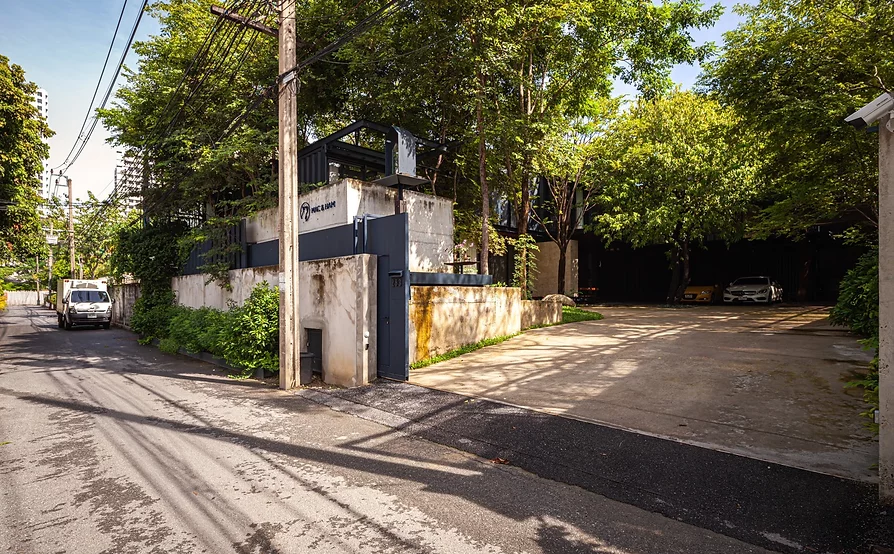
Most projects that come with a limited area of land place plenty of thought into maximizing the land’s functional efficiency to gain the most worthy of its price.
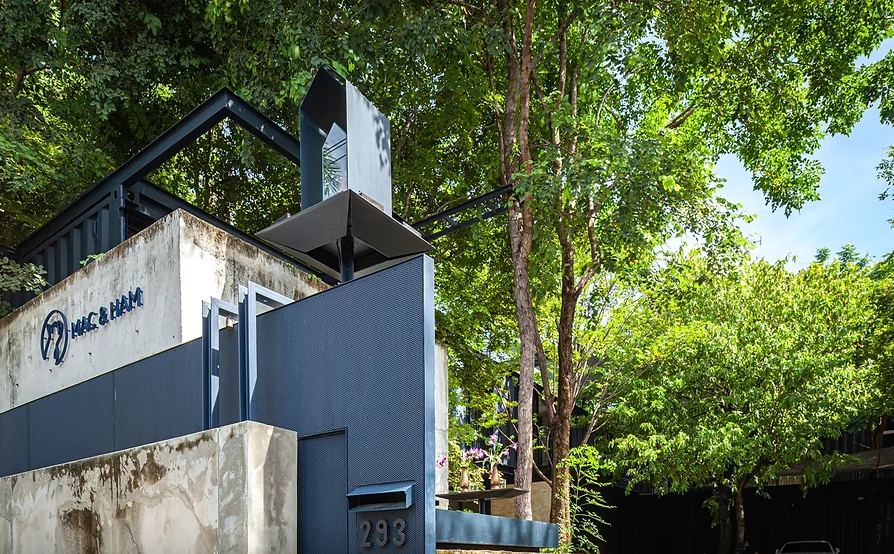
The brief requires the design to create a house that brings dwellers closer to nature within the 435-square meter land situated right at the city center.
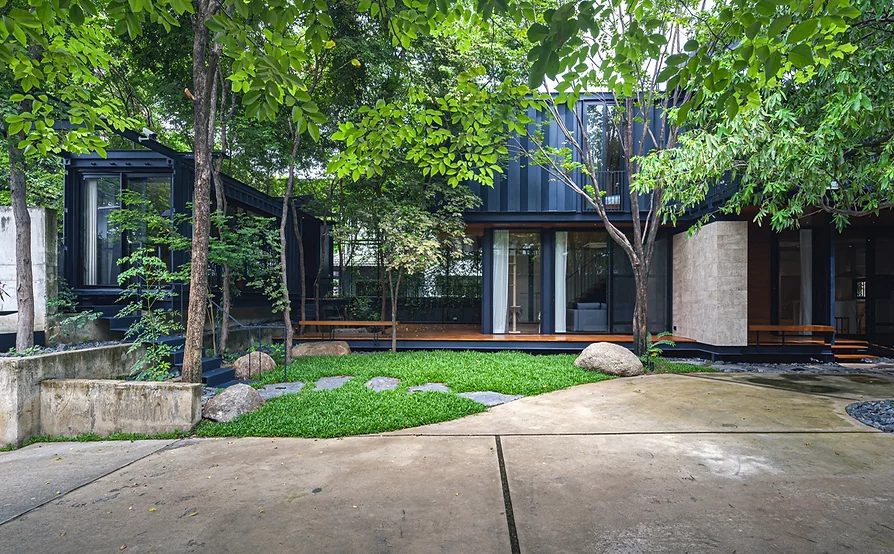
The design team approaches the project as a place where landscape architecture and the architectural structure fuse into one, where the idea of a green space involves trees growing freely, embracing, towering over the house,
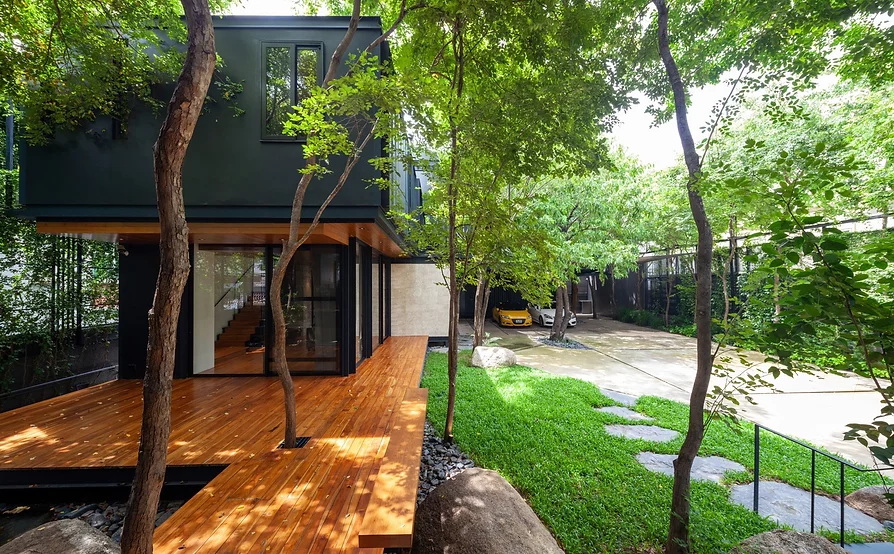
Allowing it to be something perfectly acceptable, where the changes will happen in alignment with the dwellers’ progressing courses in life.
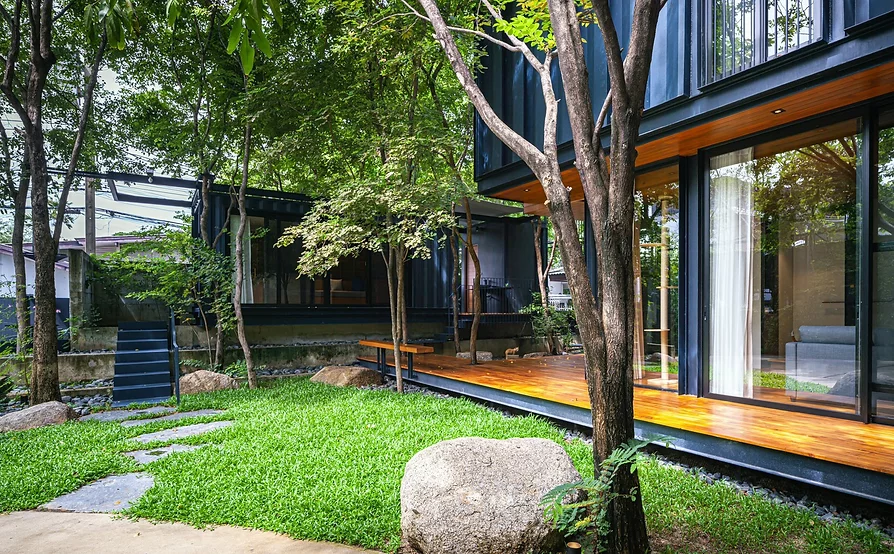
Mac & Ham House, another project by Suriya Umpansiriratana of Walllasia. The design uses container units for all the three buildings. The 435-square-meter land houses an elevated container pavilion that becomes the parents’ recreational space.
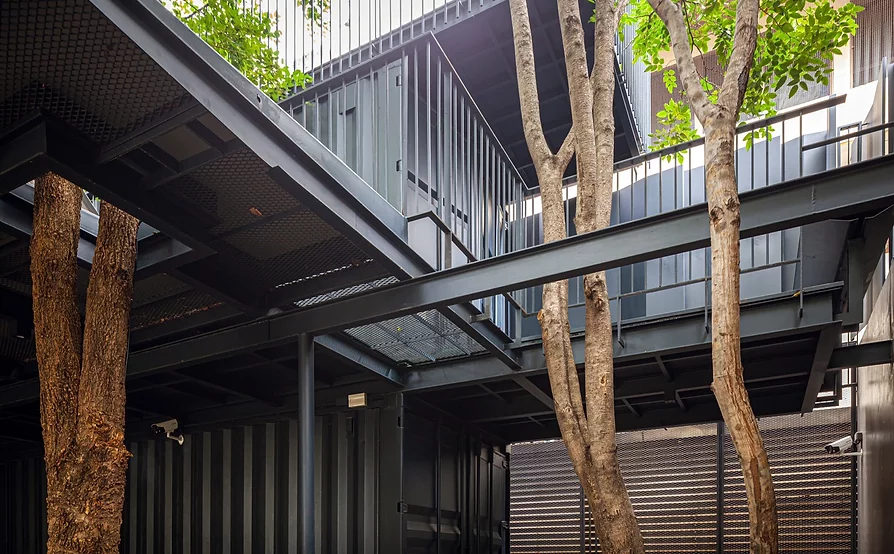
Located further into the program is a two-story house for the newly-wed family. The house is designed to have a terrace, which connects to the second floor of the container building where a multifunctional room, a rooftop space, and an art studio are all located.
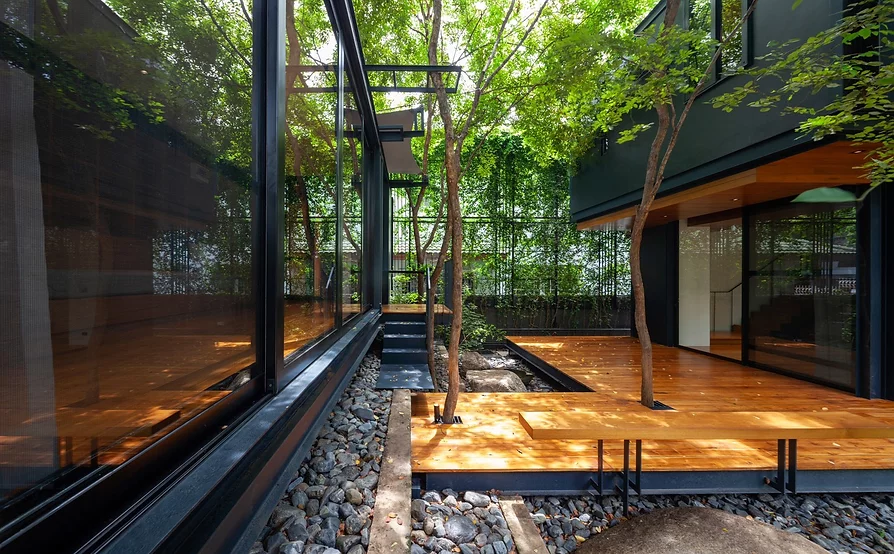
The height difference between a typical two-story house and double level container building (which is comparatively shorter) automatically renders the split level structure, which simultaneously lessens the architecture’s rigidity.
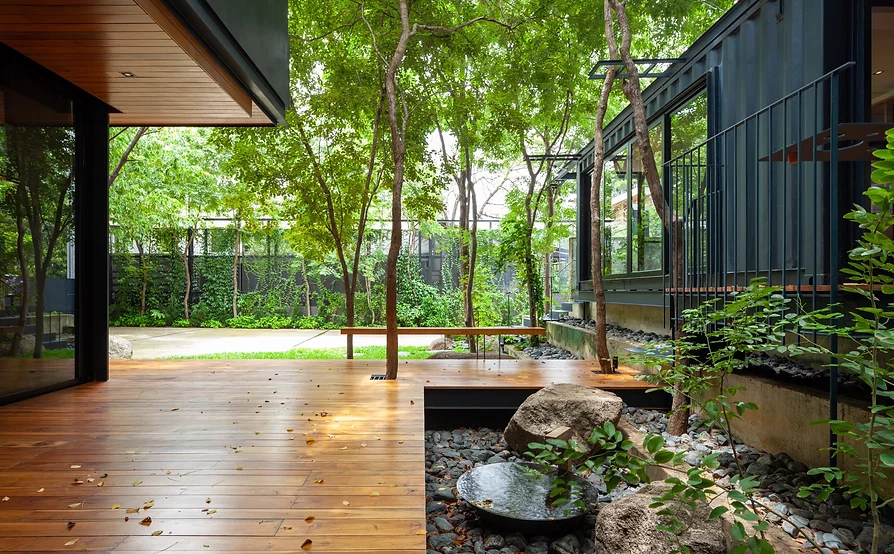
The house does not only have the first and second floor but also the terrace connecting the main house with the container building. Another connecting point is the terrace on the main house’s second floor connecting to the third floor or the container house’s rooftop.
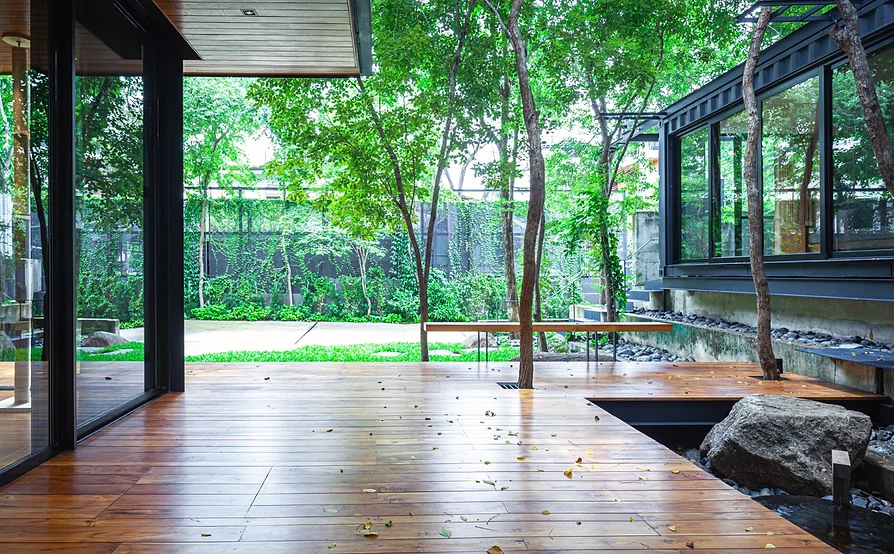
The connectivity obscures the boundaries between interior and exterior spaces/ architecture-landscape architecture, reminiscing the experience of walking through a terrain of rhythmic shifts of hills and slopes.
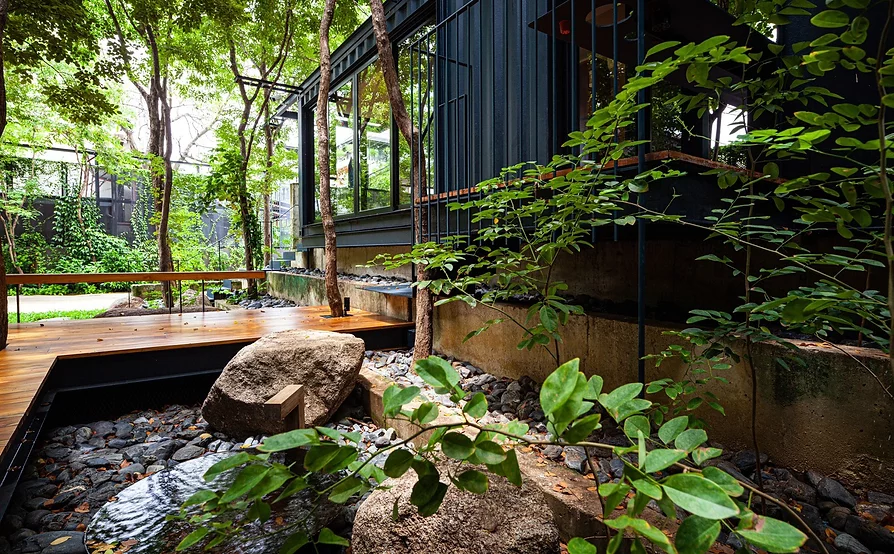
The split level characteristics enable new possibilities of spatial functionalities, such as how the ascending and descending platforms have also become seating areas for dwellers to use freely.
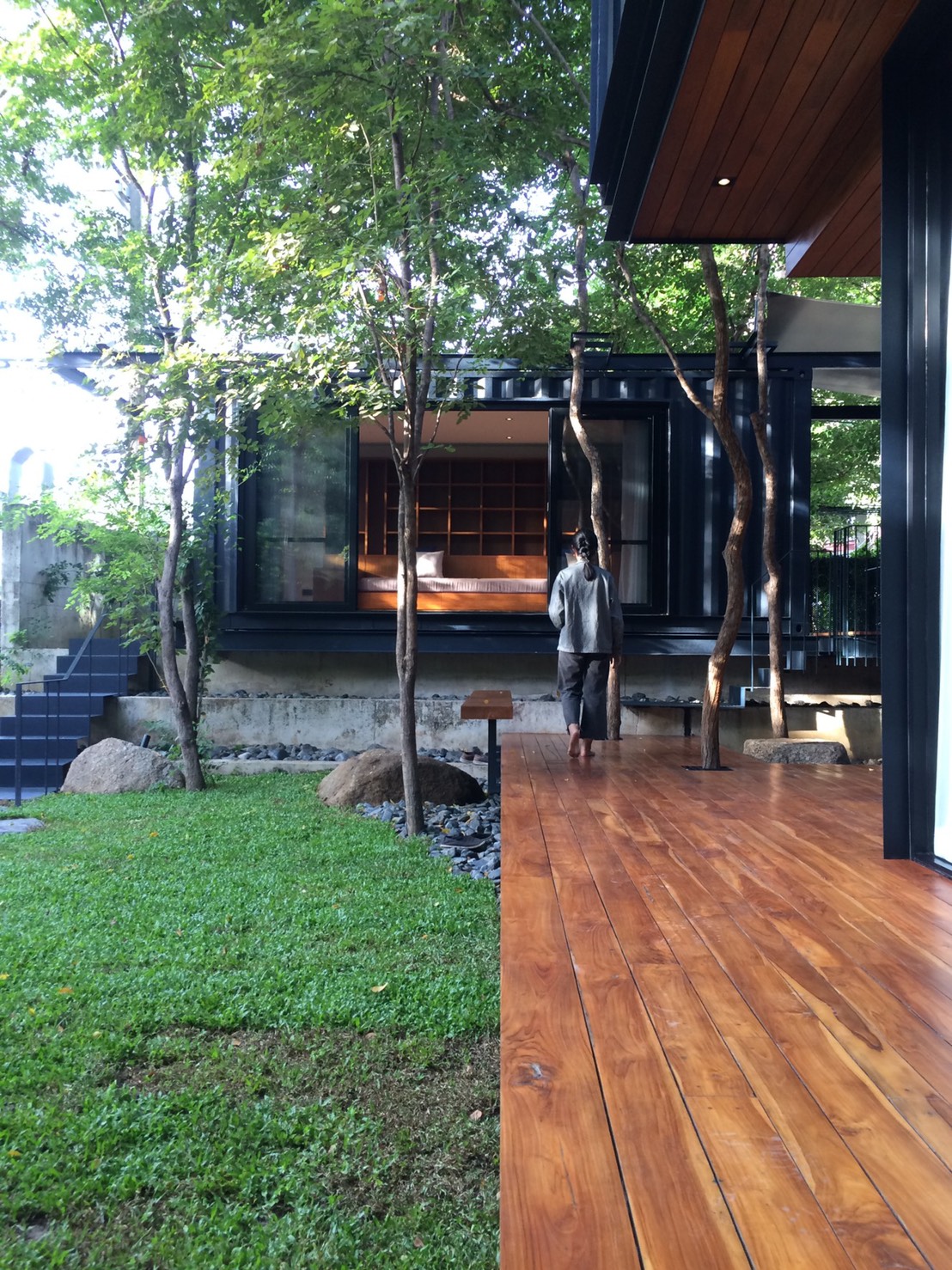
During the first year, the architect began planting Siamese Rosewood, Indian cork trees, Lanete trees around the property with the intention for them to grow and engulf the built structures over time, offering a pleasant enclosure yet refreshing comfort for the living space.
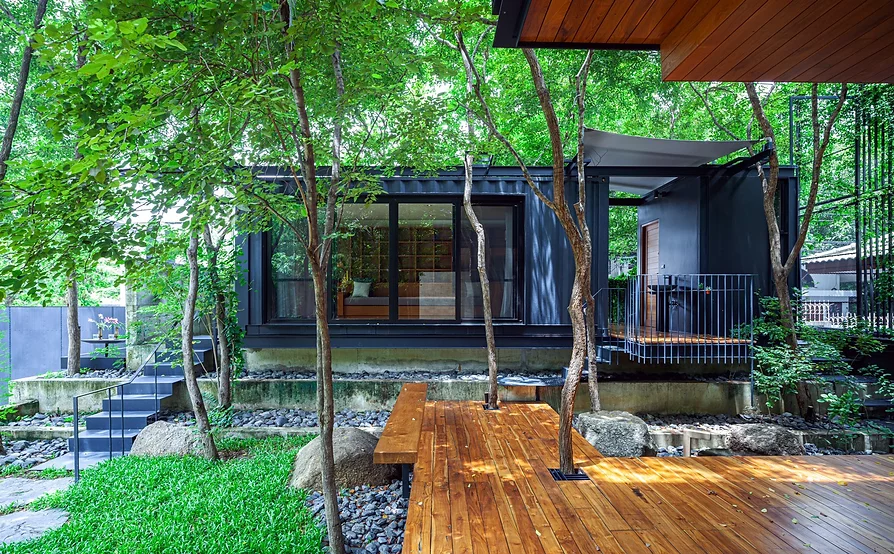
The fence is made of expanded metal sheets, functioning as both a blind and the structure where a climbing plant, cat’s claw trumpet, grows while the airy meshes’ attributes enable air and sunlight to come through.
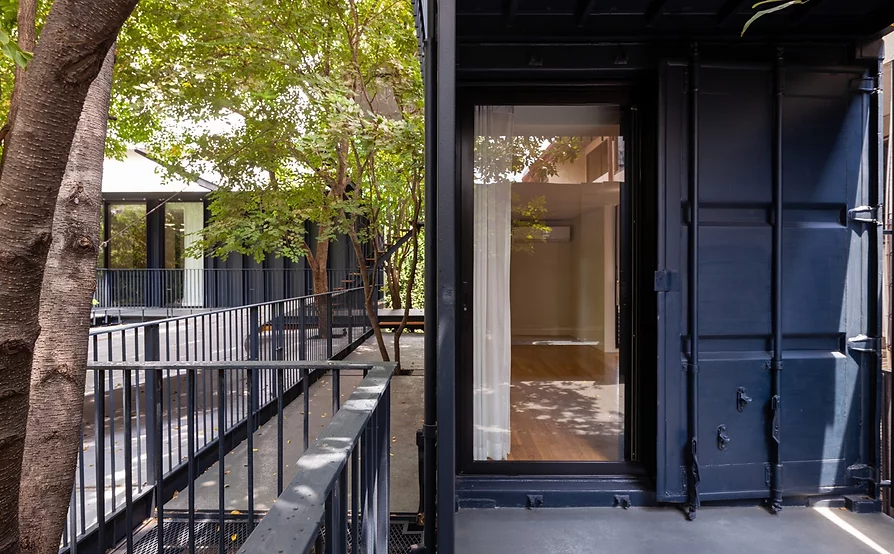
Another exciting aspect about the project is the way the design team of Wallasia works with steel.
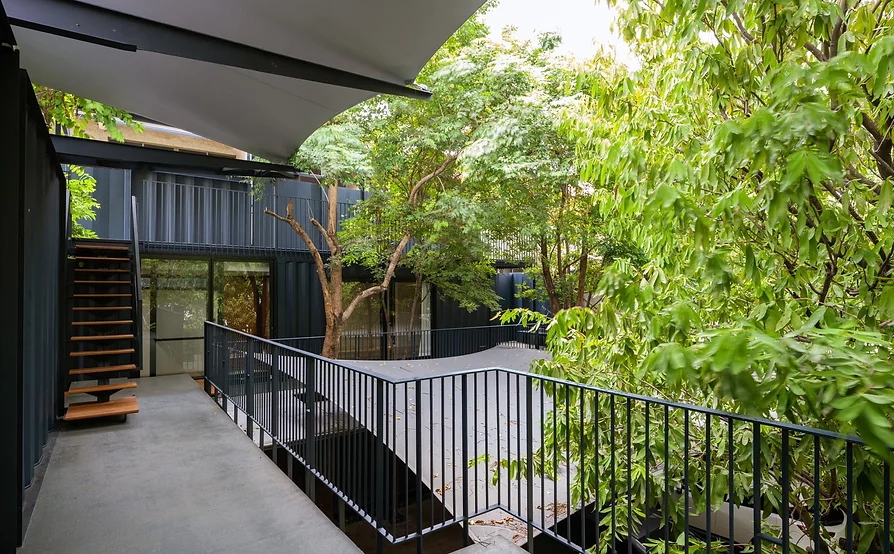
Not only does the corrugated detail of folded steel sheets bring extra strength to the material, but it also enables the exterior walls of the main house to fuse seamlessly to the external surface of the container house’s second floor.
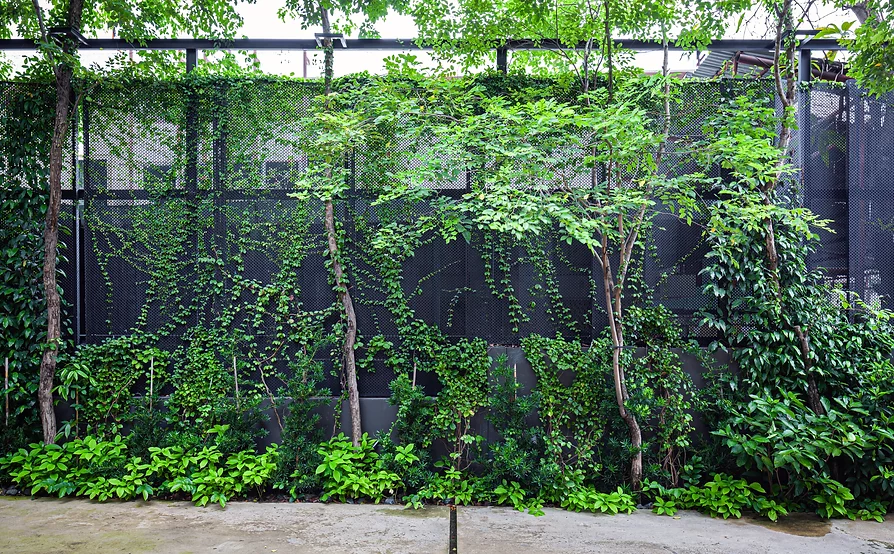
It causes the house to ‘appear’ as if it was constructed entirely from container units.
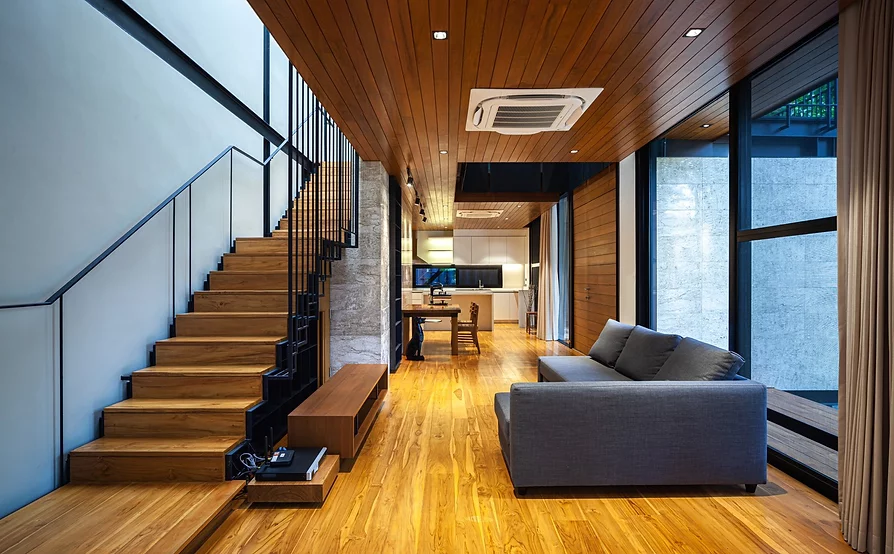
.
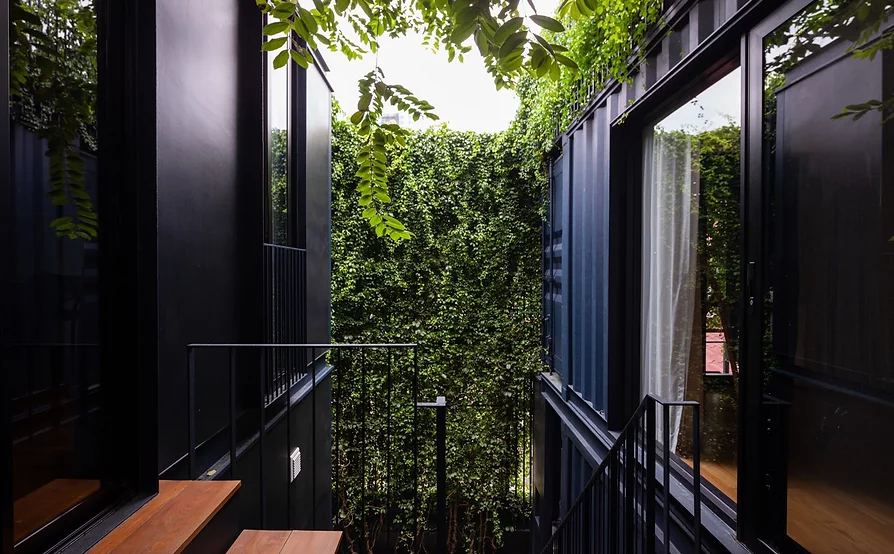
.
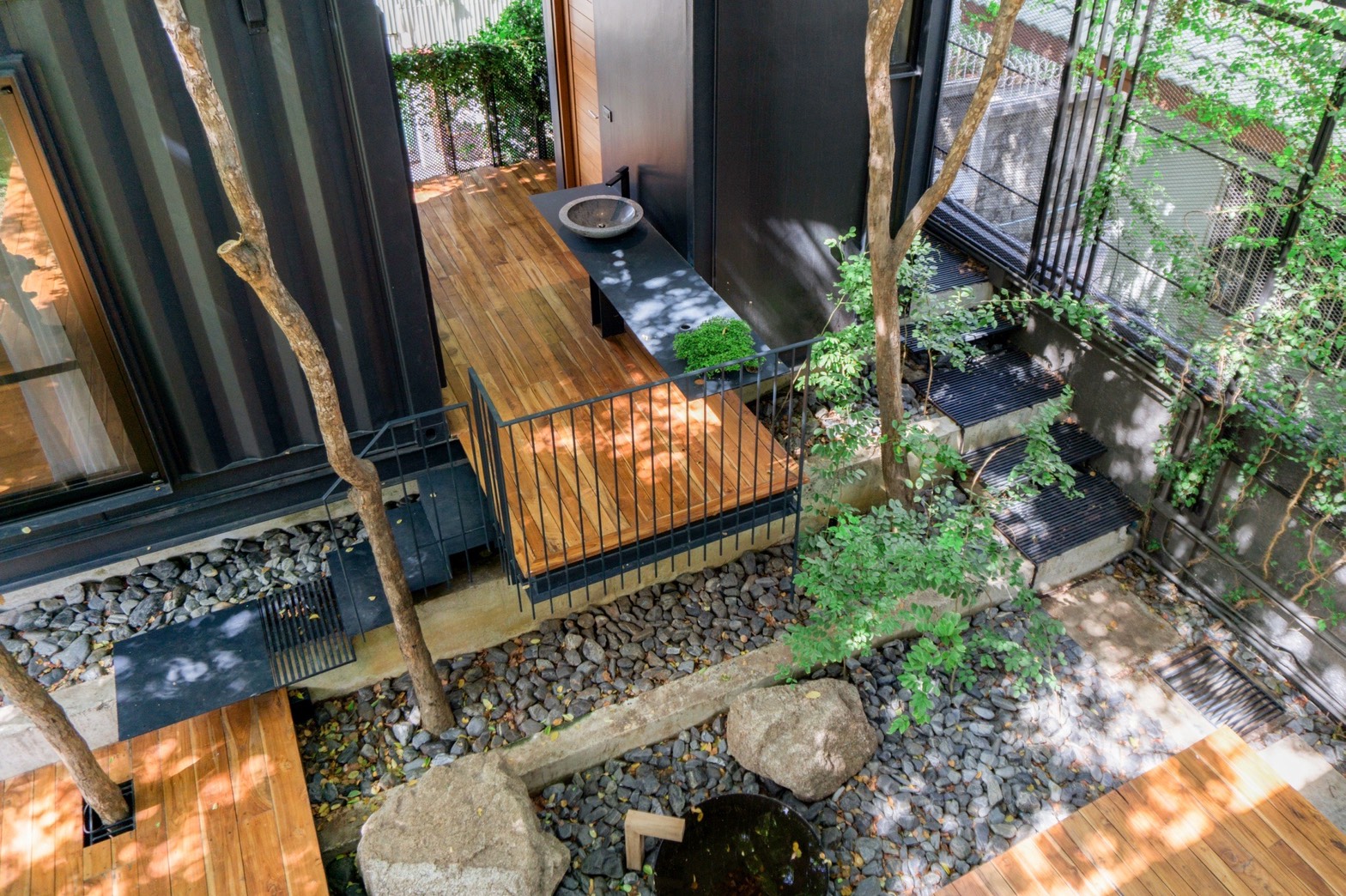
.
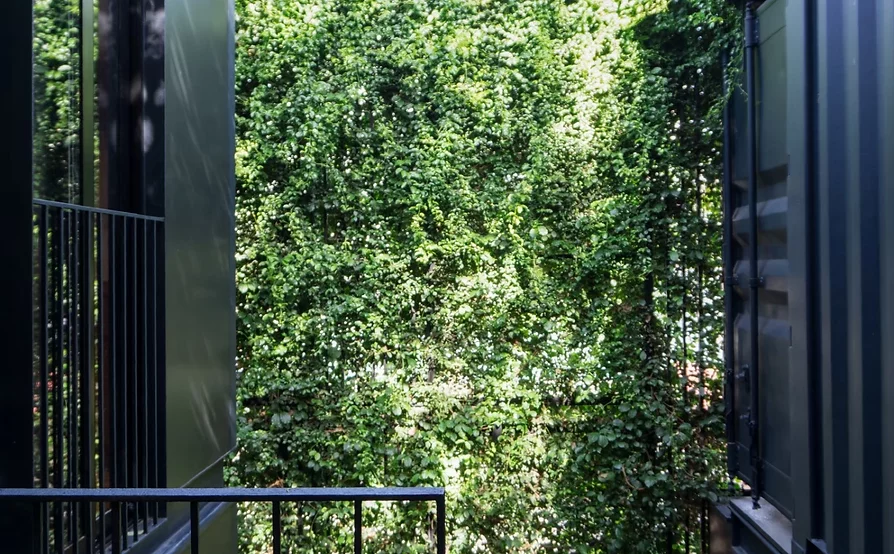
.
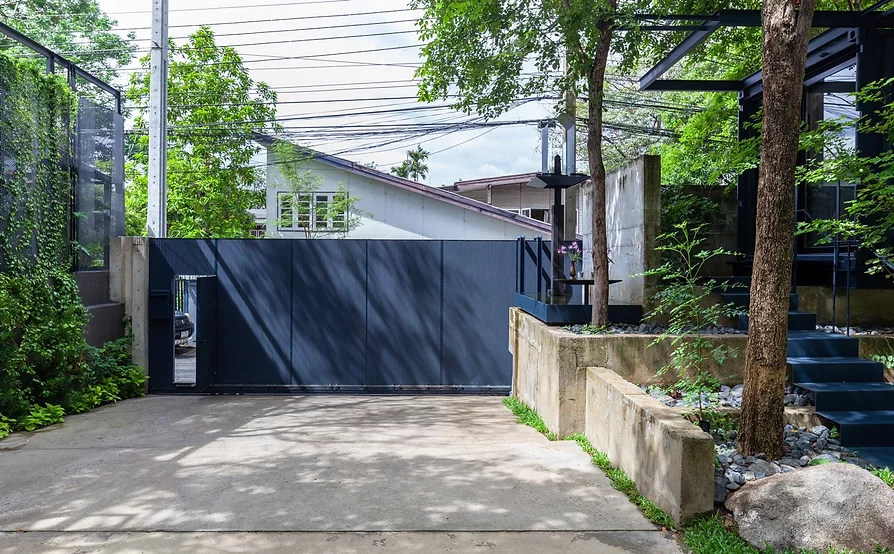
.
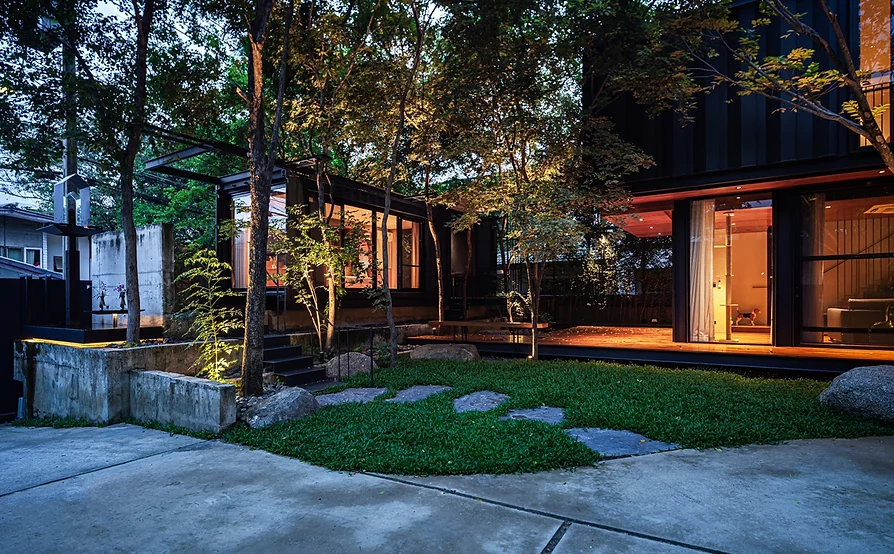
.
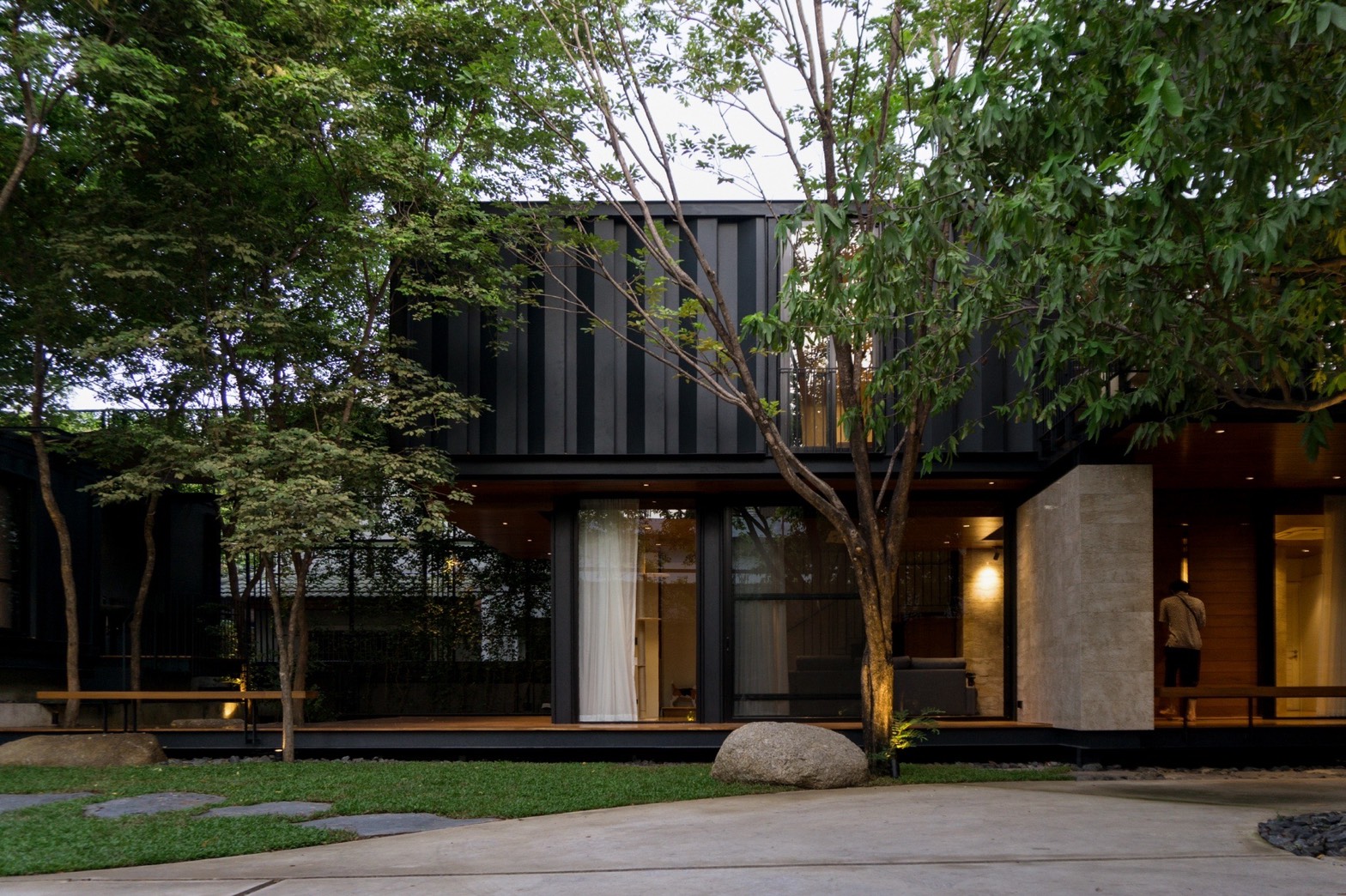
Credit: Walllasia, ltd, art4d
Source: Thaiupdates.info








